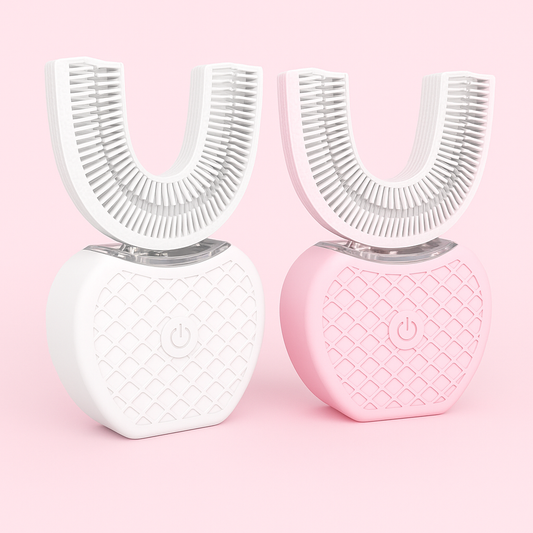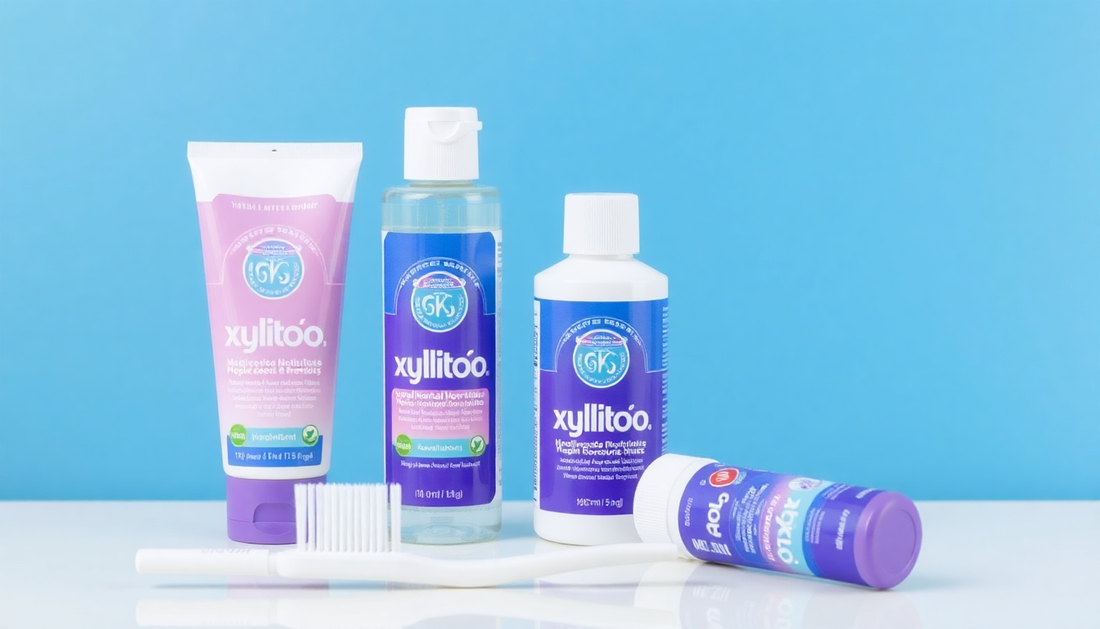Introduction: Why fluoride-free whitening is drawing attention
More consumers are searching for alternatives to conventional fluoride toothpastes while still expecting visible whitening and strong oral-health protection. Terms such as "good whitening toothpaste," "toothpaste without fluoride," and "best toothpaste for whiter teeth" rank high in search queries. Formulas that combine niacinamide (vitamin B3) and xylitol are increasingly marketed as a fluoride-free path to whiter, healthier-looking teeth. This article provides an in-depth, evidence-aligned look at how niacinamide & xylitol toothpaste can contribute to whitening and overall oral health, how they compare to other whitening approaches, safety considerations, and practical guidance for choosing the best product for your needs.
Understanding stains and what "whitening" actually means
- Extrinsic stains: Surface discoloration caused by foods and drinks (coffee, tea, red wine), tobacco, and plaque. These are the most responsive to toothpaste-based stain removal.
- Intrinsic stains: Internal discoloration from trauma, developmental conditions, or certain medications (e.g., tetracycline). These typically require professional interventions such as in-office bleaching or restorative dentistry.
- Mechanisms of whitening: Cosmetic whitening can be achieved by (a) physically removing surface stains via gentle abrasives, (b) chemically bleaching pigments with peroxide-based agents, or (c) changing the way light reflects from the tooth surface using optical agents. Niacinamide and xylitol are not peroxide bleaches but can support whitening indirectly by improving surface cleanliness and oral ecology.
Meet the actives: Niacinamide and Xylitol
- Niacinamide (vitamin B3): An amide form of vitamin B3 widely used in skincare for anti-inflammatory and barrier-supporting effects. In oral care, niacinamide is being studied for its potential to reduce gum inflammation, support mucosal tissue health, and influence oral microbiome balance. While direct clinical evidence for niacinamide as a primary whitening agent is still emerging, its effects on soft-tissue health and inflammation can improve the appearance of teeth and gum margins.
- Xylitol: A naturally occurring sugar alcohol with a long track record in dental research. Xylitol reduces levels of Streptococcus mutans (a primary caries-causing bacterium), increases salivary flow, and interferes with plaque formation. By reducing plaque and bacterial pigments that adhere to enamel, xylitol helps maintain and protect enamel brightness over time.
Science-backed mechanisms: How these ingredients support whitening and oral health
Neither niacinamide nor xylitol bleaches teeth like hydrogen peroxide, but they improve tooth appearance through several complementary mechanisms:
- Plaque and biofilm reduction: Xylitol reduces cariogenic bacteria and plaque mass. Less plaque means fewer chromogens (pigmented compounds produced by bacteria or adsorbed from foods) built up on enamel surfaces.
- Anti-inflammatory effects: Niacinamide may reduce gingival inflammation. Healthier, less inflamed gums decrease the appearance of discoloration around the gumline and produce a cleaner overall look.
- Surface maintenance: Many fluoride-free whitening toothpastes combine these actives with safe polishing agents (e.g., low-abrasivity silica) to gently remove extrinsic stains and restore enamel gloss without aggressive wear.
- Saliva stimulation: Xylitol encourages salivary flow; saliva helps buffer acids, remineralize enamel (when minerals are present), and wash away staining particles.
- Microbiome modulation: Both ingredients can contribute to a more balanced oral ecology. A healthier microbiome is less likely to produce pigmented byproducts that attach to teeth.
What the clinical evidence says
Evidence quality varies by ingredient and outcome:
- Xylitol: Supported by robust randomized trials and population studies demonstrating its anti-caries effect, reduction in S. mutans counts, and benefits for plaque control. These benefits indirectly support tooth brightness by reducing stain-prone plaque.
- Niacinamide: Early-stage clinical and mechanistic studies indicate benefits for gingival health, reduced inflammation, and mucosal resilience. Large-scale randomized controlled trials specifically showing niacinamide-mediated whitening are limited; most claims rely on its ability to improve soft-tissue health and reduce inflammation-driven discoloration.
- Whitening outcomes: Toothpaste-based improvements typically focus on extrinsic stain removal. The strongest, immediate whitening effects are seen in products containing safe polishing agents and optical brighteners, sometimes augmented by enzymes or mild bleaches. Formulas that pair these with xylitol and niacinamide aim to provide both immediate appearance benefits and long-term oral health support.
Formulation details: What to look for on the label
When choosing a fluoride-free whitening toothpaste that leverages niacinamide and xylitol, pay attention to formulation attributes:
- Active concentrations: Check that xylitol is listed (effective concentrations vary by product; chewed gum studies often use 5-10 g/day total xylitol exposure, but toothpastes will contain lower concentrations). Niacinamide should be present in an oral-care-appropriate concentration—manufacturers sometimes indicate function rather than exact percent.
- Abrasivity (RDA): Safe whitening toothpaste should have a relative dentin abrasivity (RDA) within recommended limits (typically under 250; values under 100 are considered low to moderate). Lower RDA with effective polishing particles (e.g., silica) can remove surface stains without harming enamel.
- Additional whitening agents: Look for mild polishing agents, enzymes (e.g., papain), or optical additives that provide immediate visual brightening. These work synergistically with xylitol and niacinamide.
- pH balance and preservatives: A neutral to slightly basic pH helps stability; ensure preservatives and flavoring agents are suitable for your tolerance (e.g., mint or xylitol-sweetened flavors).
Comparing approaches: Peroxide bleaching vs. toothpaste-based whitening
- Peroxide-based bleaching: In-office or at-home peroxide gels oxidize intrinsic and extrinsic pigments and produce dramatic whitening. Results are faster and more pronounced, but sensitivity and enamel/mucosal irritation are potential side effects.
- Toothpaste-based whitening: Focuses on extrinsic stain removal, optical enhancement, and long-term plaque control. Niacinamide & xylitol formulas emphasize safety, oral ecology support, and daily maintenance rather than rapid shade changes.
- Best solution often combines strategies: Many users prefer professional bleaching for a baseline improvement, then maintain results and oral health with a targeted toothpaste such as one containing xylitol and niacinamide.
Using niacinamide & xylitol toothpaste effectively
- Brush twice daily for two minutes using a soft-bristled brush. Good technique matters more than brush strength.
- Use a pea-sized amount for adults; supervise children and consult pediatric guidance if you choose a fluoride-free option for them.
- Complement brushing with daily interdental cleaning (floss, interdental brushes) to remove stain-prone biofilm between teeth.
- Stay hydrated and consider chewing xylitol-sweetened gum between meals to stimulate saliva and reduce plaque formation.
- Avoid or minimize frequent sipping of staining drinks; using a straw and rinsing with water after consuming staining beverages can help.
- Schedule professional cleanings periodically—mechanical scaling removes the most stubborn extrinsic stains and helps toothpaste maintain results.
Safety and special considerations
- Caries risk: If you have active cavities or are at high caries risk, discuss switching away from fluoride with your dentist. Fluoride remains the most evidence-based agent for enamel strengthening and cavity prevention.
- Sensitivity and irritation: If you experience sensitivity or gum irritation after changing toothpastes, discontinue use and consult your dentist.
- Pediatric guidance: Many pediatric dentists recommend fluoride for children at risk of decay. If choosing a toothpaste without fluoride for children, consult both dentist and pediatrician about risk management and ingestion prevention.
- Allergies and tolerances: Check ingredient lists if you have known allergies to flavorings, preservatives, or specific polishing agents.
Practical buyer's guide: Choosing the best fluoride-free whitening toothpaste
To find a product that balances safety, whitening performance, and oral-health support, use this checklist:
- Contains xylitol and lists it among active ingredients (search "toothpaste with xylitol").
- Contains niacinamide or lists a vitamin B3 derivative (search "niacinamide toothpaste").
- Clear RDA or indication of low-to-moderate abrasivity.
- Includes a mild polishing agent or optical brightener for visible, immediate improvement.
- Positive verified user reviews for reduction of stains and low sensitivity (look for "toothpaste that whitens teeth" and "best toothpaste whitening teeth" in reviews).
- Manufacturer transparency on ingredient purpose and, ideally, any clinical testing.
Common myths and misconceptions
- Myth: Fluoride-free cannot whiten. Fact: Whitening depends on stain removal and optical effects; fluoride is primarily an anti-caries agent and is not required for surface stain removal.
- Myth: More abrasive = more whitening. Fact: Excessive abrasivity damages enamel and can increase long-term discoloration; safe, controlled abrasivity is best.
- Myth: Niacinamide bleaches teeth like peroxide. Fact: Niacinamide supports tissue health and reduces inflammation; it does not oxidize tooth pigments like peroxides.
How dentists view fluoride-free whitening toothpastes
Dental professionals generally support evidence-based strategies for both disease prevention and cosmetic outcomes. Where caries risk is low and patients seek fluoride-free options for personal or medical reasons, dentists may approve the use of targeted, low-abrasivity toothpastes containing xylitol and niacinamide to manage plaque and enhance appearance. For high-risk patients, fluoride use is typically recommended alongside or instead of fluoride-free alternatives.
DIY tips and adjuncts to boost results
- Use an electric toothbrush for more consistent plaque removal.
- Rinse with water after consuming staining foods and drinks; consider a short delay before brushing after acidic beverages to avoid abrasion on temporarily softened enamel.
- Combine a professional cleaning every 6–12 months with daily use of a toothpaste that whitens teeth to maintain results.
- Consider xylitol chewing gum after meals to reduce bacterial acid production and encourage salivary washout of staining particles.
Search and SEO tips for smart shopping
When researching online, use a combination of product and ingredient keywords to find suitable fluoride-free whitening options:
- Product-focused: "best toothpaste for whiter teeth", "toothpaste whitening best", "toothpaste that whitens teeth".
- Ingredient-focused: "toothpaste with xylitol", "niacinamide toothpaste", "toothpaste without fluoride".
- Health-focused: "health teeth", "treatment for teeth", "fluoride toothpaste free".
- Combine phrases for targeted results: "good whitening toothpaste with xylitol" or "toothpaste without fluoride that whitens".
Case examples: How users report benefits
- Daily maintainer: A user who had previous professional whitening found that switching to a niacinamide & xylitol toothpaste maintained whiteness longer and reduced sensitivity compared with a peroxide gel used frequently.
- Stain reducer: A coffee drinker reported decreased surface staining after several weeks of using a low-abrasivity, xylitol-containing whitening toothpaste alongside regular cleanings.
- Gingival support: A person with mild gingivitis noted reduced gum inflammation and a cleaner-looking gumline after using a toothpaste containing niacinamide combined with mechanical plaque control.
Frequently asked questions (FAQ)
-
Q: Can niacinamide whiten teeth without peroxide?
A: Niacinamide does not bleach teeth like peroxide. Its value lies in improving soft-tissue health and reducing inflammation, which can make teeth appear cleaner. For surface stain removal, pair niacinamide with polishing agents and xylitol-based plaque control. -
Q: Is xylitol safe in toothpaste?
A: Yes—xylitol is widely used in dental products and chewing gum. It is safe for humans but toxic to dogs, so keep products away from pets. -
Q: Will switching to fluoride-free increase my cavity risk?
A: It depends on your caries risk. If you are at low risk, a well-formulated fluoride-free toothpaste with xylitol and good hygiene may be acceptable. Consult your dentist if you have active decay or high risk.
Where to buy and product recommendations
If you're exploring high-quality fluoride-free whitening options, look for brands that clearly list toothpaste with xylitol and niacinamide toothpaste on the label and provide RDA information or safety testing data. For convenience and curated selections, consider browsing specialized oral-care shops that feature evidence-based fluoride-free lines. For example, you can explore a range of fluoride-free whitening choices at Havana Body, which highlights toothpaste options aimed at whitening and oral-health maintenance.
Final takeaways
Niacinamide & xylitol toothpaste offers an evidence-based, fluoride-free approach that focuses on reducing plaque, supporting gingival health, and gently removing extrinsic stains. While these ingredients are not peroxide bleaches, they create a healthier oral environment that reduces the buildup of staining biofilm and improves overall appearance when paired with safe polishing components. For those seeking a "toothpaste without fluoride" that still helps keep teeth bright, formulations combining xylitol, niacinamide, and enamel-safe polishing agents represent a balanced, research-informed choice.
Ready to try a targeted fluoride-free whitening routine? Explore curated, evidence-oriented products such as toothpaste without fluoride and the best toothpaste for whiter teeth featuring toothpaste with xylitol at Havana Body. Shop now to find options optimized for whitening, oral health, and everyday safety.
Sponsored: Visit Havana Body to browse and purchase quality fluoride-free whitening products tailored to your goals.


